I noticed that the wheel studs on my tires are rusty. However, I’m trying to cut costs and do the replacement myself. What is the average cost to replace the wheel studs on my car?
Annette Maxon · Answered on Apr 27, 2022
Reviewed by Shannon Martin, Licensed Insurance Agent.
Sorry to hear that you found a rusty wheel stud!
On average, new wheel lug studs cost $4 to $12. This cost does not include labor (which would likely set you back *$61 to $77).
If only one stud is missing or damaged, you can drive it safely when traveling a short distance to a repair shop or auto parts dealer. But for the most part, it’s best to keep your car parked until the replacement has been made.
While you’ll have to spend a bit to get this part replaced, you can cut costs elsewhere by looking over your car insurance policy.
That’s what Jerry is here for—a licensed broker that offers end-to-end support, this super app gathers affordable quotes, helps you switch plans, and can even help you cancel your old policy!
MORE: 11 car insurance hacks to save you money
Car MaintenanceCar Tires
View full answer
WHY YOU CAN TRUST JERRY
Jerry partners with more than 50 insurance companies, but our content is independently researched, written, and fact-checked by our team of editors and agents. We aren’t paid for reviews or other content.
Browse More Content
Coolant Temperature Switch (Sensor): Replacement Cost
What To Do If Your Gas Cap Won’t Come Off
What To Do If Coolant Is Leaking
Oil Filter Housing Gasket Replacement
What To Do If Your Steering Does Not Respond Properly
Jeep Cherokee Country Insurance Cost
Ford Escape Titanium Insurance Cost
Nissan Maxima S Insurance Cost
Kia Optima Insurance Cost
Lincoln Mkc Premiere Insurance Cost
Maple Grove Car Insurance
District Heights Car Insurance
Brunswick Car Insurance
Millersville Car Insurance
Meridianville Car Insurance
I love the Dodge Challenger and I found a gorgeous 2012 model online for what seems to be a reasonable price. How much does a 2012 Challenger usually go for?
How much does a 2012 Challenger usually go for?
Andrea Barrett
Apr 27, 2022
It’s been a while since I’ve gotten a new car, so it’s my first time using a key fob. I’m worried that something is up with its battery, so I want to open it up and look inside. Can you tell me how to open a Dodge key fob?
Natalie Todoroff
Apr 27, 2022
I bought a used car with a bunch of bumper stickers that, to sum it up shortly, don’t really suit me. Will Goo Gone hurt car paint if I try using it to remove these bumper stickers?
Melanie Mergen
Apr 27, 2022
Browse All Questions
Make your drive to Maryland a painless one by mapping your route, planning for traffic, and learning about some of the state’s road laws.
Zachary Morgan
Apr 26, 2022
From top 40 hits to talk radio, we’ve got all the info regarding the very best radio stations in Wausau.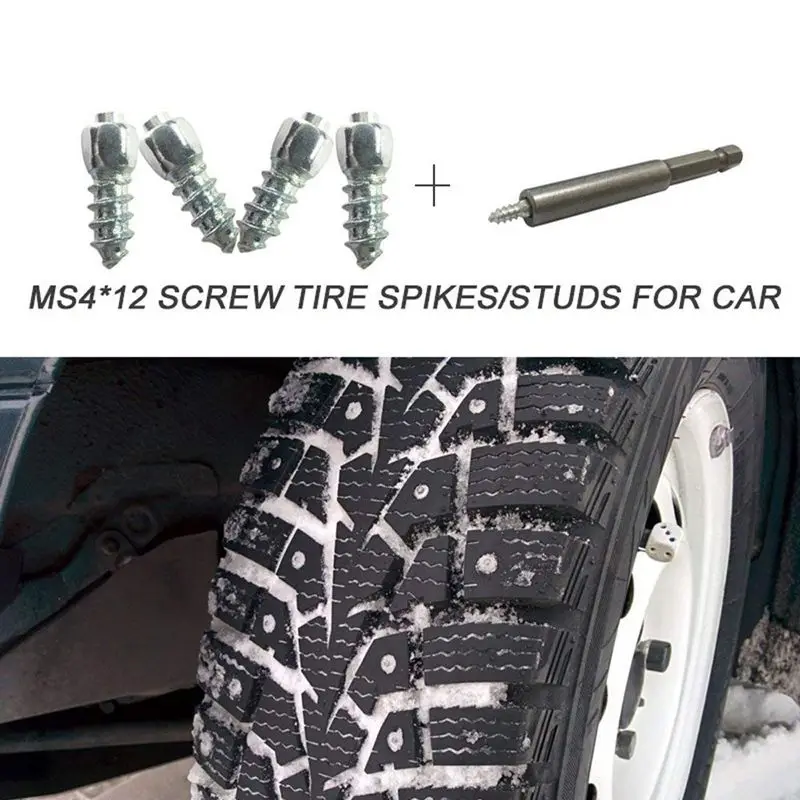
Zachary Morgan
Apr 26, 2022
Total Fire Protection offers a wide range of services including 24/7 emergency service, fire training, and systems installation, repairs, and maintenance.
Zachary Morgan
Apr 26, 2022
Elephant Insurance
Land Rover
New drivers
Ferrari
Infiniti
Foreign
Renter insurance
Jaguar
Veterans
Holidays
Alabama
Pennsylvania
Umbrella Insurance
Bentley
Volkswagen
Cancellation Policy
Lamborghini
Oregon
Maryland
Hawaii
Subrogation
Gross Vehicle Weight Rating
Movies
Hummer
No long forms
No spam or unwanted phone calls
Quotes from top insurance companies
Find insurance savings — it's 100% free
Toyota
Hyundai
Mercedes-Benz
Subaru
Chevrolet
Mitsubishi
If you’re looking for a reliable way to drive during the winter you’ve likely heard of tire studs, but they’re not a straightforward solution.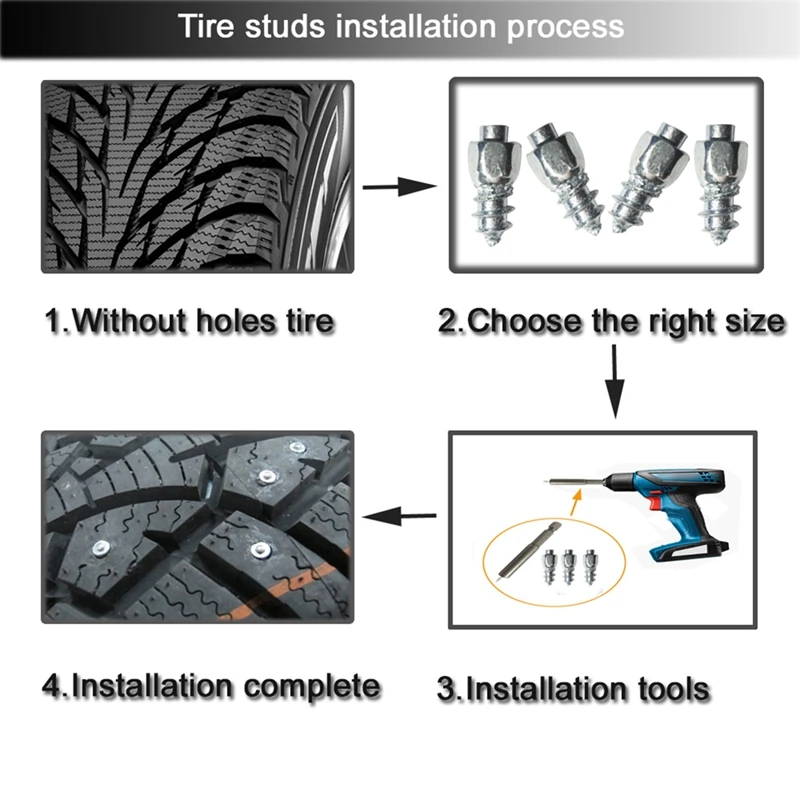
Tire studs have specific conditions in which they work best, others where they pose a risk and best practices for installation, maintenance, and more, all covered below!
Tire studs are small metallic spikes or protrusions fitted onto the tread, usually in the winter, to make driving on slippery roads easier. They come in different sizes and can be fitted depending on the tire’s tread. You can get studded or studdable options according to how handy you are with vehicle parts and accessories.
If you want to learn more about tire studs, including how they work, what size you need, whether or not you can remove/replace them, keep reading!
Tire studs are intended to break through the ice to give the tires more improved grip and traction for better vehicle control on slippery roads.
However, do they actually make a difference?
Well, this depends on the surface on which the vehicle is being driven while the studs are installed.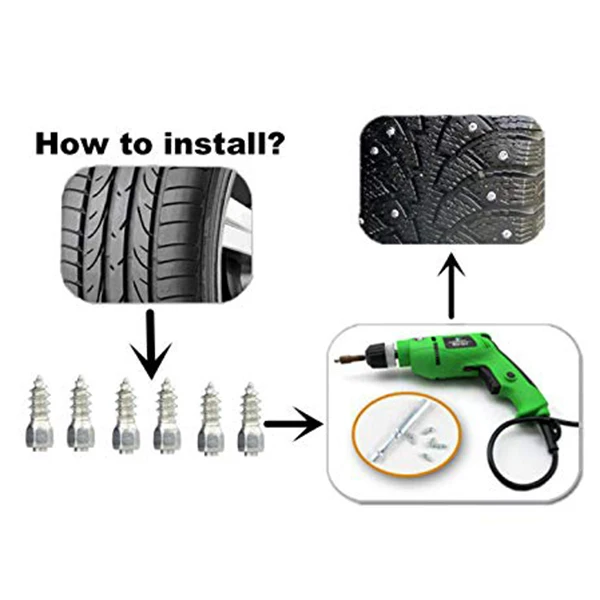
Their effectiveness is most noticeable when driving on ice as they’re built to break through for grip and traction.
On snow, however, they lose out to tire chains – designed to give your tires more surface to grip the snow – as the surface isn’t rigid enough for the studs to break through and create a solid anchor that stabilizes the vehicle.
Moreover, when the roads they’re being used on are just wet (for example from rain) or completely dry, they actually decrease traction and worsen control; think of it as running on smooth bathroom tiles with football cleats.
Due to their nature, it’s recommended that studs be installed onto thick tires. A good rule of thumb is to avoid tires with single-digit readings on the tread depth gauge.
Experts recommend installing studs on winter tires as they’re usually more readily adapted for them e.g. by being thicker and more resistant to stiffening in lower temperatures.
You can but based on the pointers above, it’s not a good idea to install studs to used tires, as they could have worn to the point where they can’t support them as efficiently and this unreliability could pose a risk.
If you consider yourself an expert, this comes down to the cost of acquiring the tools.
Tire studs are usually sold in packs of 100, ranging from $10 to about $50 depending on size and build material.
To fit them onto the tire, you would need a stun gun or drill – the latter is best for screw studs – both of which cost a few hundred dollars each.
If you’re not experienced enough with this, it’s best to seek professional services in order to avoid causing potentially fatal damage such as accidentally puncturing the tire.
Most auto shops will stud your tires for $15 per tire, and this covers the whole process, including labor and materials.
How long studded tires last depends on factors such as how often they’re used, what conditions they’re used in, the weight of the vehicle, etc.
Most industry professionals and manufacturers, however, recommend that you swap out your studded tires every four seasons.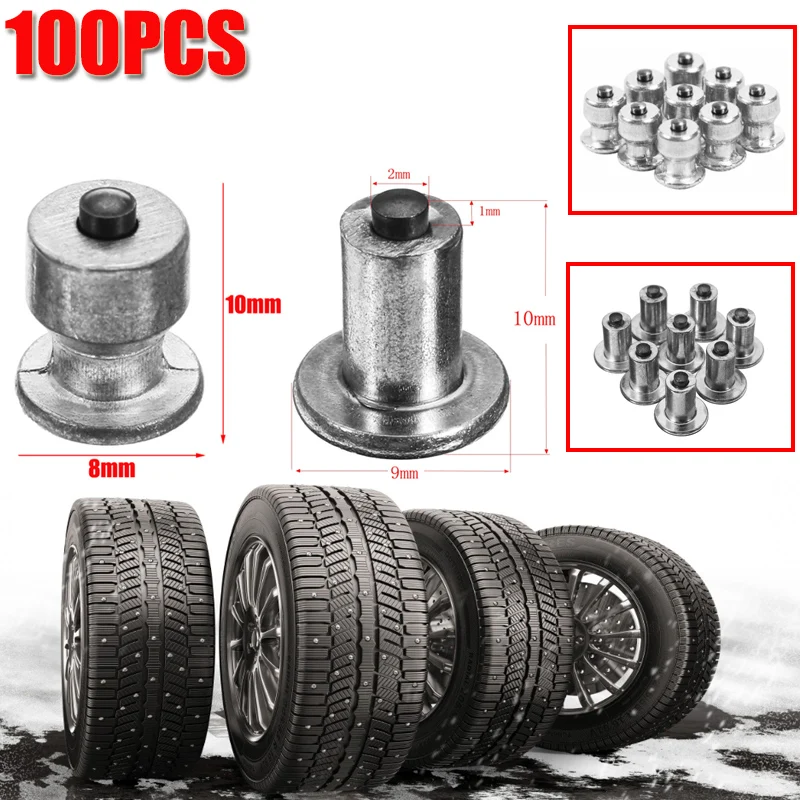
It is possible to remove studs from your tires right at home using lubricant and a set of pliers, but only after unmounting the wheels from the vehicle first.
Lubing up the studs beforehand ensures that they pop out smoothly without rupturing the surface and causing a puncture.
You should use the same lubricant you use when mounting the wheels so you don’t end up with something that affects the rubber.
A good set of pliers should be used to grab the top of each stud and gently twisting it out instead of pulling.
While it is safe to remove studs from tires, a lot of care should be applied to the process and, in most cases, should be left to a professional.
For starters, after removing studs, make sure you check for punctures. Each tire could carry up to 100 studs, so ensure you’re thorough during this step.
Tires whose studs have been removed don’t tend to last as long, especially if they’re winter tires that aren’t adapted for use outside of very low temperatures.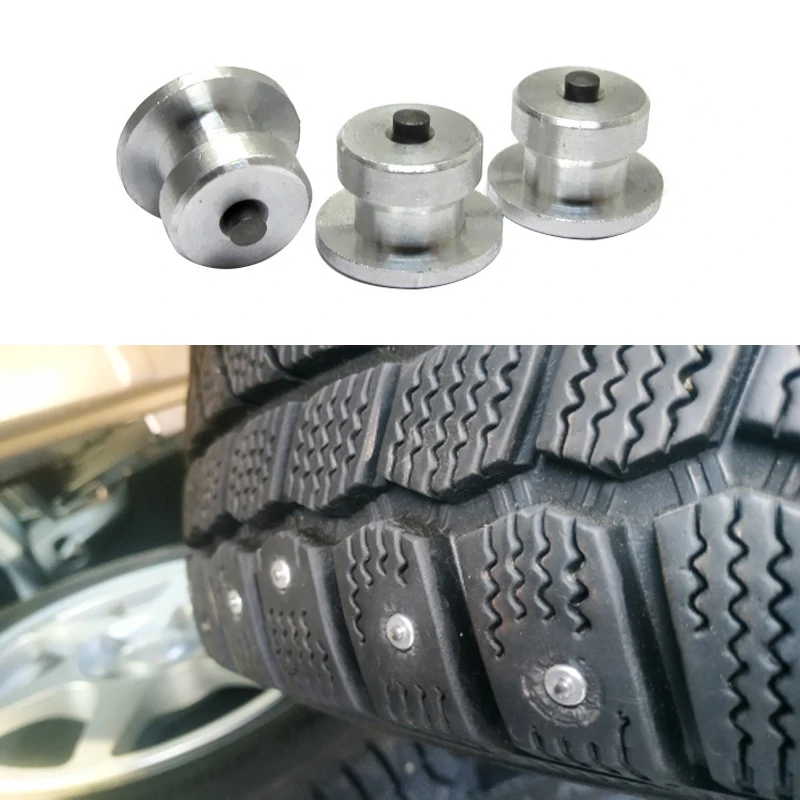
To avoid any unforeseen issues that could result from this process, it is best that you keep the studs on the tires and instead swap the tires themselves out.
This way, you can have a set of wheels for the different seasons and when winter rolls back around, all you have to do is install the dedicated set of wheels.
Tire studs can be replaced but, as discussed above, it’s not a recommended move. Keep one set of studs to one set of tires and only install the tires during the appropriate seasons to ensure you get the most use you can from them.
Most of the tire studs available today have a stem made from steel or aluminum and a head made from tungsten to ensure they last as long as possible.
All these materials are highly durable, so if you find that they’re breaking off, it’s more than likely because they’ve been overused. In this case, they should be replaced as soon as possible to avoid motor accidents.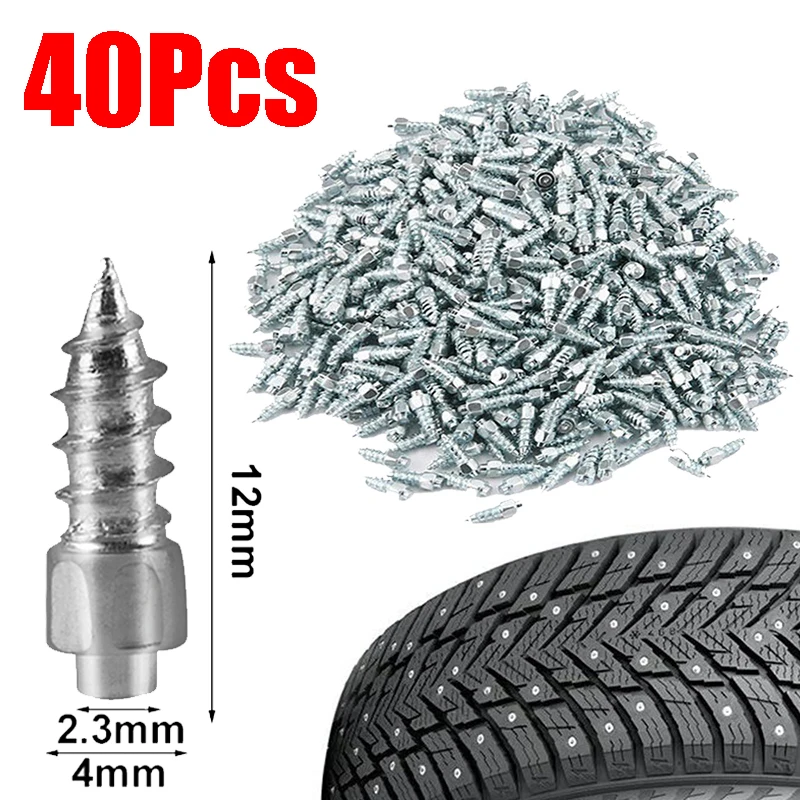
It could also indicate that they’ve been used on the wrong surfaces such as dry asphalt. Keep in mind that they’re meant primarily for icy roads and anything else that sacrifices control could put the driver and passengers in danger.
Tire studs are regulated by region, and it’s important that you check your local laws before installing them.
Most jurisdictions restrict their usage only to certain months within the winter. For example, in the U.S., only six states permit their use throughout the year (New Mexico, Wyoming, Colorado, Kentucky, New Hampshire and Vermont).
Other countries permit their use but with strict regulations of season and vehicle weight, including Denmark, Finland, Russia, France, Great Britain, Switzerland, Sweden and Turkey.
Some countries like Belgium, Poland, Portugal, Hungary, the Czech Republic and Luxembourg have outright banned their use.
Due to how we’ve established they work, tire studs are known to cause damage to road surfaces outside of the winter.
Because of the damage they can cause to roads, tire studs are illegal in some states and countries.
This comes down to where you drive your vehicle during the winter. If your regular commute involves icy roads, studded tires could be a better choice for you.
Regular winter tires, however, are enough for most people who only need to drive over snowy roads.
Apart from the aforementioned loss of traction on non-icy roads, studded tires are also noticeably noisier than winter tires.
An icy path is the one place where studded tires get a chance to really prove their worth, and this includes black ice.
They break through it to give the vehicle better grip and traction where the tire’s rubber would be inadequate.
Having an all-wheel-drive system could convince you that it’s enough year-round, but it’s better to be safe than sorry.
While AWD would provide more power than other systems, during more extreme conditions, traction would be harder to generate so winter or studded tires could come in handy.
Outside of these seasons, though, it’s probably a bad idea to keep the tires on the vehicle as the decreased traction puts a greater strain on the entire system.
When choosing studs for your tires, you should use a tire depth gauge to measure how much tread you have.
If you already know how to take readings from a gauge, finding the right stud size is as easy as getting one whose number corresponds to the first part of the reading.
For instance, if you find the tread depth to be 14/32″, go for a TSMI #11 size stud, if it’s 15/32″, go for a TSMI #15 stud and so on.
Some winter tires can be studded but it’s possible to use them without installing the studs beforehand.
If you are looking to know more, you can also see our posts on what are tire socks, which tires do you put chains on, and how long do winter tires last.
Tire studs provide better grip and traction on icy roads during the winter and they also work on black ice.
However, they should be used with caution and you have to look carefully into them before making your choice.
They’re best suited for use on roads that have been impacted by harsh weather conditions but could potentially be dangerous on regular snow, wet roads or dry asphalt.
Removal and replacement are generally discouraged; you should have a dedicated set of tires for these seasons and you can expect to get four seasons’ worth of normal use before needing to get a new one.
90,000 services| Radius | R12 | R13 | R14 | R15 | R16 | R17 | R18 | R19 | R20 | R21 | R22 |
| Disassembly/Assembly | nine0021 50r100r | 100r | 135r | 135r | 145r | 180r | 215r | 230r | 230r | 300r | |
| Balancing | 70r | 80r | 105r | 110r | 130r | 150r | 190r | 210r | 225r | nine0021 265r285r | |
| Removal/Installation | 50r | 70r | 70r | 80r | 105r | 130r | 140r | 150r | 160r | 190r | 230r |
| Total 1 wheel | 170r | 250r | 275r | 325r | 370r | nine0021 425r510r | 575r | 615r | 685r | 815r | |
| Total 4 wheels | 680r | 1000r | 1100r | 1300r | 1480r | 1700r | 2040r | 2300r | 2460r | 2740r | 3260r |
| Radius | R16 | R17 | R18 | R19 | R20 | R21 | R22 |
| Disassembly/Assembly | 230r | 240r | 280r | 320r | 330r | 330r | 400r |
| Balancing | 130r | 150r | 190r | 210r | 225r | 265r | 285r |
| Removal/Installation | 105r | 130r | 140r | 150r | 160r | 190r | 230r |
| Total 1 wheel | 465r | 520r | 610r | 680r | 715r | 785r | 915r |
| Total 4 wheels | 1860r | 2080p | 2440r | 2720r | 2860r | 3140r | 3660r |
| Radius | R16 SUV | R17 SUV | R18 SUV | R19 SUV | R20 SUV | R21 SUV | R22 SUV |
| Disassembly/Assembly | 230r | 240r | 280r | 320r | 330r | 330r | 400r |
| Balancing | 145r | 170r | 185r | 225r | 245r | 285r | 325r |
| Removal/Installation | 115r | 160r | 170r | 190r | 180r | 220r | 260r |
| Total 1 wheel | 490r | 570r | 635r | 735r | 755r | 835r | 985r |
| Total 4 wheels | 1960r | 2280r | 2540r | 2940r | 3020r | 3340r | 3940r |
| Radius | R15 NIVA | R16 NIVA | GAZELLE, FORD, PEUGEOT |
| Disassembly/Assembly | 135r | 135r | 170r |
| Balancing | 140r | 145r | 180r |
| Removal/Installation | 105r | 115r | 170r |
| Total 1 wheel | 380r | 395r | 520r |
| Total 4 wheels | 1520r | 1580r | 2080p |
| R22 22 | R13 | R14 | nine0021 R15R16 | R17 | R18 | R19 | R20 | R21 | R22 | |
| 30r | 30r | 30r | 40r | 40r | 40r | 50r | 50r | 50r | 60r | 60r |
We follow the rules of tire storage and guarantee that your tires will serve you as long as possible! nine0712
Attention! Tires are accepted for storage only in a clean condition.
Find out by phone: 8(8452)599-123 and 599-300
You can make an appointment for tire fitting online and leave the wheels for seasonal storage at the nearest van auto center convenient for you
You can use the service in the service centers:
Seasonal storage of tires in the warehouses of the van auto company is carried out in two ways: on disks (storage of wheels as a whole) and without them.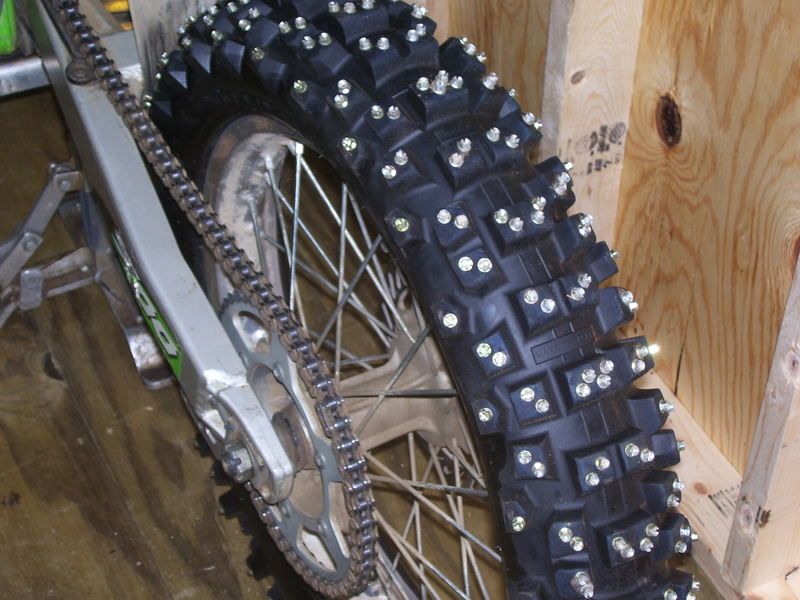 In the first case, tires are stored in a stack up to 4 pieces high, in the second case they are placed in a row on the tread. Other storage methods, in order to avoid tire deformation, are not allowed.
In the first case, tires are stored in a stack up to 4 pieces high, in the second case they are placed in a row on the tread. Other storage methods, in order to avoid tire deformation, are not allowed.
Tires are stored in accordance with GOST R 54266-2010 “Pneumatic tires. Packing, transportation and storage. nine0712
The issuance of tires is made in the presence of an agreement and an act of acceptance and transfer, certifying the fact of the delivery of tires for storage. If the contract or act is lost, it can be restored in advance if you have a passport.
You can pick up your set of wheels at any time without waiting for the end of the storage period.
When the wheel change season comes, sign up for a tire service, indicating that your set of wheels is in seasonal storage. On your chosen center, day and hour, your set of wheels will be waiting for you to install on your car. nine0712
We are always ready to give your unused tires a temporary shelter, while carefully preserving their current condition until the next season.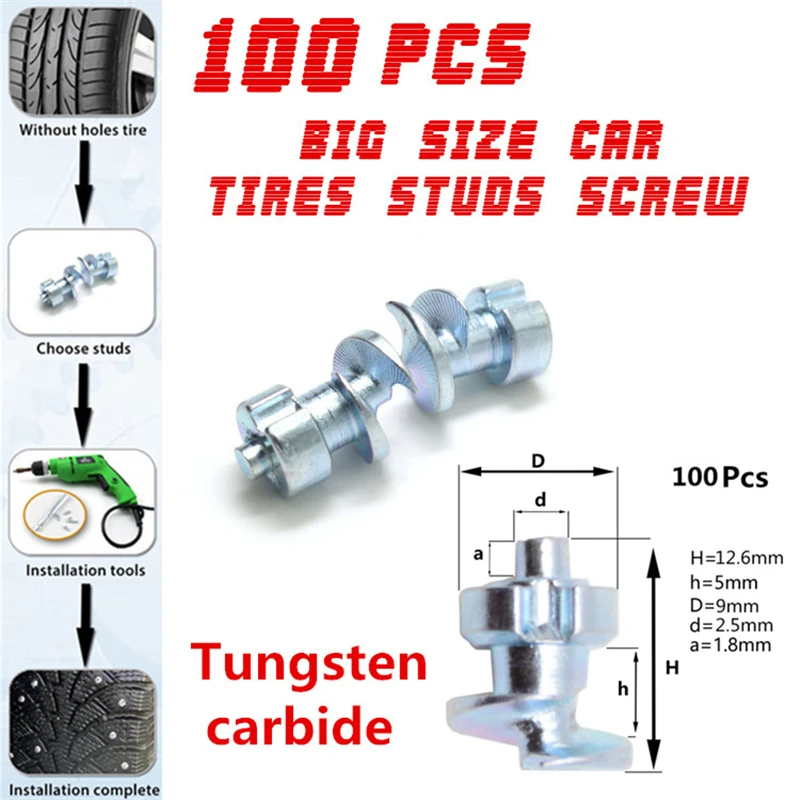
Call: 8(8452)599-123 and 599-300
Enjoy driving your car, and entrust seasonal wheel storage to professionals!
Winter tires - catalog with prices.
Car tires must provide sufficient traction in all conditions. This is a mandatory requirement. Winter tires are often equipped with studs to improve traction on slippery surfaces. Sometimes drivers make do-it-yourself tire studding or restoration of lost studs. Let's analyze this process in more detail. nine0712
In fact, tire studding is a simple process, which consists in installing studs into the tire with your own hands. At the same time, the tire can be new or used. You need to understand that to perform such work, you need a certain qualification, an understanding of the principles of installing a spike in rubber.
Tires are often re-studded. Such work makes it possible to significantly extend the life of studded tires. It is also an opportunity to save on tires when buying, by buying simple tires and studding them yourself, you can get good winter tires. nine0712
Such work makes it possible to significantly extend the life of studded tires. It is also an opportunity to save on tires when buying, by buying simple tires and studding them yourself, you can get good winter tires. nine0712
Some manufacturers sell tires without studs, offering drivers to stud them themselves. This procedure can be entrusted to the specialists of the store, or performed by yourself after purchase.
It should be understood that not all tires can be studded. Summer and all-season tires are not suitable for such refinement. Winter tires with a European tread pattern are also usually not suitable for stud placement.
In addition, be sure to inspect the condition of the rubber on used tires. If there is visible wear, cracks in the material should not be restored. Be sure to specify the date of manufacture, if the tire was made earlier than five years ago, it is also better not to touch it. nine0712
The best option would be to choose tires suitable for such work.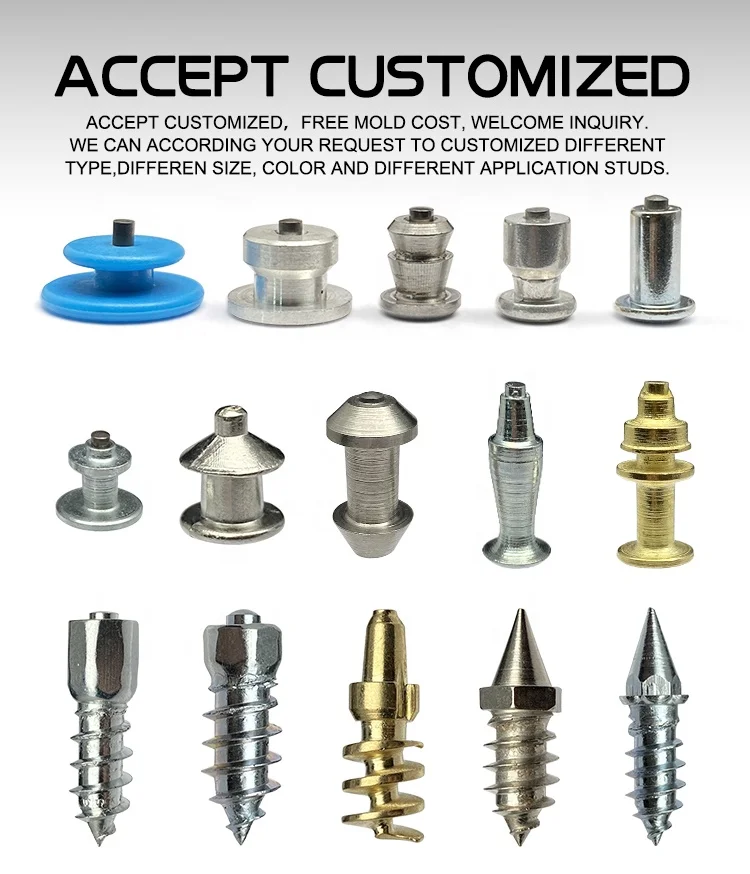 Some manufacturers initially prepare Scandinavian tires for revision. They have recesses for placing spikes. If possible, these tires should be purchased.
Some manufacturers initially prepare Scandinavian tires for revision. They have recesses for placing spikes. If possible, these tires should be purchased.
You can use any other rubber. It must meet the following requirements:
These are the basic requirements for tires for additional studding. nine0712
When choosing a tire for studding, you need to look at the residual pattern. According to the requirements of technical regulations, winter tires must have a tread depth of at least 4 mm. This is a mandatory requirement for any winter tire.
The minimum number of spikes is not really regulated. The calculation is based on the initial number of parts. It is believed that operation stops at 60% of the lost spikes. This information can only help in determining the timing of re-studding. nine0712
More interesting is the question of the maximum number of spikes.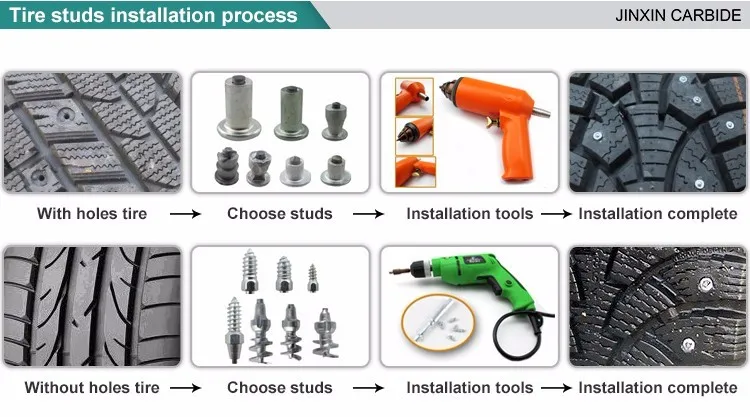 Here you need to understand - an increased number of elements increases the noise level during movement. At the same time, the efficiency of the tire does not increase much. It is worth focusing on the following maximum indicators:
Here you need to understand - an increased number of elements increases the noise level during movement. At the same time, the efficiency of the tire does not increase much. It is worth focusing on the following maximum indicators:
These are European standards. In Russia, these standards are not spelled out anywhere.
The studding of winter tires begins with the choice of studs. They come in different forms. We list the main options.
First look at the shape of the flange. There are the following types.
The next step is form. Now there are many varieties, but if they all give an advantage, then only for the first time after installation. They cost more. It is recommended to use simple round spikes.
Now there are many varieties, but if they all give an advantage, then only for the first time after installation. They cost more. It is recommended to use simple round spikes.
At the moment, two-piece spikes are used. The outer part is made of aluminum. The core is steel or tungsten.
Let us consider in more detail what the shape of the spikes is. If a replacement is made, then it is worth choosing a part similar to that used. nine0712
The following types of spikes are distinguished by shape.
 Used by Nokian. They have a special pad that allows you to drive almost silently on asphalt. nine0639
Used by Nokian. They have a special pad that allows you to drive almost silently on asphalt. nine0639 When studding from scratch, it is better to use round spikes, they are inexpensive. The round spike is not erased too quickly.
The round spike is not erased too quickly.
It is important to prepare the tire for studding. It is better to do the work in advance. It is advisable that the tire rest for 2-3 months before use. In the process, remember the following rules.
Start by removing the old spikes. You can pull out the spikes with a screwdriver or pliers. All remaining holes are purged from dirt. Be sure to measure the depth of the holes. It is advisable to do this before buying spikes, then you can definitely choose the size.
During operation, the tire must be firmly fixed. Any movement can lead to spike placement errors. If the tire was not originally intended for studding, you need to make holes with a drill, use a drill with a depth gauge. nine0712
Do not place spikes in sockets that have been used before.
Repairs can be made without a gun. This is easy to do, but you need to be careful. Before work, moisten the surface with soapy water.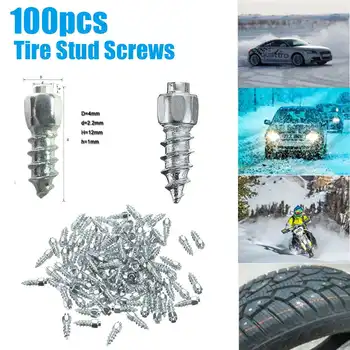
The method consists in driving the spike into place with a hammer. This must be done carefully so as not to damage the core.
If possible, it is better to use a stud gun. This equipment will allow you to place the spikes in the tread blocks much more accurately. nine0712
The work is extremely simple. We fall asleep spikes in the pneumatic gun. We insert the legs of the fixture into the hole and hammer the part into place. The main thing is to make sure that the gun is vertical.
Self-studding tires is not a difficult task. Even a novice car enthusiast can cope with it. Knowing how the work is done, you can save on preparing the car for the winter season.
Firm <
Offers the service of installing special studs for winter wheels.
Possible work with new tires in which there is a special hole for installing spikes.
The cost of work is 2. 50 UAH per spike.
50 UAH per spike.
That is, a tire, depending on the radius and manufacturer, costs from 190 to 200 UAH.
Stud types
Any spike consists of two elements: a body and an insert. The insert is a working element that determines the durability and efficiency of the spike. nine0757 All spikes can be divided into two types: single-flange and multi-flange.
Single-flanged ones resemble studs or a rivet in shape. This is the classic type of spike that started it all. These spikes are the cheapest. The vast majority of studs used in Ukraine are single-flanged (Fig. 1).
More complex are multi-flange (two- or three-flange) studs. They last longer and more efficiently, but are also more expensive (Fig. 2).
Fig. 1
nine0712
Rice. 2
The correct choice of studs depends on the roads on which the car travels. In our conditions, high adhesion is important. The spike must hold firmly and not move away from contact with the road, not sag in the soft body of the rubber. The more flanges the better.
The more flanges the better.
Some tire manufacturers specify the specific type of stud to be used when studding their product. Among the manufacturers of spikes, five main firms stand out. These are Ugigrip (France), Tikka, Season, Turvanasta (all from Finland), Sitek (Germany). Domestic manufacturers are represented rather narrowly and hardly noticeable on the market. nine0712
All modern spikes are of high quality. Their design is constantly being improved. The opinion that studs have a negative impact on road wear and on the environment is refuted by studies conducted in Finland and Sweden.
When to spike?
Tires should be studded as early as possible before the start of the winter season.
When the spike is inserted into the hole, the rubber walls of the block are forcibly stretched by the paws of the stud gun, increasing the diameter of the hole several times. Naturally, in this case, there is a residual deformation of the rubber, which negatively affects the retention of the spike.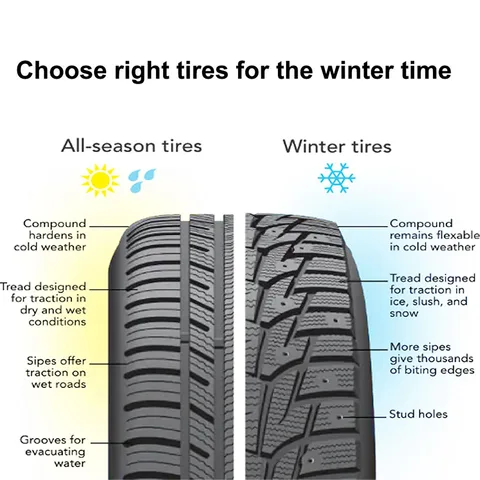 nine0757 Therefore, it is very important to allow the tire to age after studding...and the more, the better...
nine0757 Therefore, it is very important to allow the tire to age after studding...and the more, the better...
This is the first little secret that sellers love to operate in front of inexperienced drivers, telling that factory tire studding is much better than what they do here on the spot - pure nonsense.
It's just that the tires studded "there" a few months before the start of winter have long aged ... The stud is better wrapped and fixed.
1-2 months is an excellent time for tires to "rest" after studding. nine0712
Which stud is best for studding?
This question is not as easy to answer as it seems at first glance.
For example, Bridgestone strongly recommended that their tire models be studded with a conventional single-flange stud.
With proper and competent studding, as well as tire running-in, such a stud serves no less than a two-flange one.
I will not specifically touch on the topic of studs with square / triangular and other carbide inserts, as well as the lower flanges of a stud of a special shape, for example, square - there is no point. If you have already decided to stud your tires, then at 99% of the time you will be offered only two options:
If you have already decided to stud your tires, then at 99% of the time you will be offered only two options:
1) Single flange plain (fig. 1)
2) Double-flanged spike - type "glass" (Fig. 2)
Based on these two proposals, you need to choose one - the most suitable for you.
If you are a calm driver, moving without sharp accelerations and braking, then any of these two types of spikes will last you a long time.
If you operate a car in hard conditions, if you have a car with mechanics (automatic transmission has a winter mode, which significantly prolongs the life of the studs), then a two-flange stud will be better able to withstand the “pull-out force” at first. However, after 1-2 seasons, when the tread height, and hence the spikes, decreases due to natural wear, the spike will still break the seat and will no longer be able to be held like a new one. By the way, if the car is operated on asphalt in active mode, then dirt / sand / slag gets clogged between the upper flange and the neck of the hole - very quickly “gnawing out” free space in the rubber, which in turn greatly weakens the reliability of fixing the spike.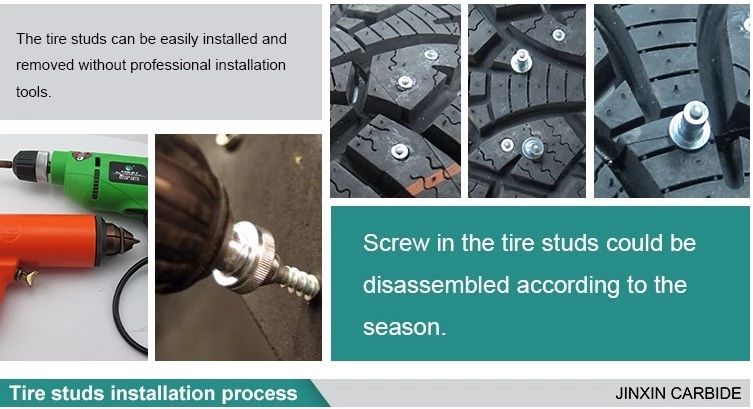 nine0757 With a single-flange stud, with this style of riding, the entire body is evenly wrapped in rubber, so sand / dirt / slag does not “eat away” and break the rubber walls of the hole so quickly, weakening the stud fit.
nine0757 With a single-flange stud, with this style of riding, the entire body is evenly wrapped in rubber, so sand / dirt / slag does not “eat away” and break the rubber walls of the hole so quickly, weakening the stud fit.
Those. there is no perfect recipe for choosing the type of spike, because. many other factors play a role in its quality of fit, for example:
Tread compound hardness (the harder the better)
The massiveness of the block - the more the better
The hardness of the rubber at the point of "anchoring" of the stud - many manufacturers specifically make this rubber layer from a harder compound. nine0757 And, of course, the correctness of the studding with the desired spike, or rather with the spike of the correct size.
This needs to be given special attention.
The tread height of different tire models from different manufacturers is also different.
For someone it is 9mm, for someone it is 10mm...etc...
The height of the studs for passenger models of winter tires is 10-11 mm.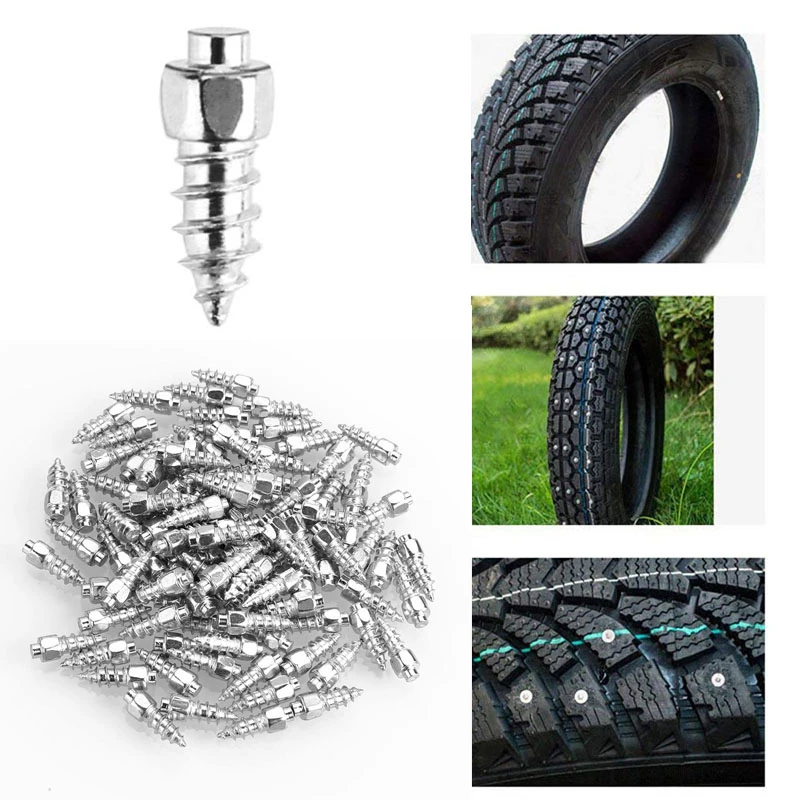 (for trucks there are also spikes with completely different sizes)
(for trucks there are also spikes with completely different sizes)
The stud should sit in the seat in such a way that its carbide insert protrudes no more than 1.2-1.3 mm above the tread level, and the stud body plane is on the same level with the tread plane. Only such a landing will ensure the "survivability" of the spikes. nine0757 If the thorn is planted deeper, i.e. its height was chosen incorrectly, then it will practically not work on ice until the tire tread wears out by 1-2 mm..
If a high stud is planted in a low tread with a protrusion of 1.5-1.7 mm above the surface, then the loss of studs in the first winter season can reach 30-50%, or even more ... True, on the first ice, braking can be noticeably better than on "correctly" studded tires ... But such happiness, as you understand, will not last long. nine0712
Myths about studded winter tires.
There are still drivers who do not accept studded tires. Why grind spikes in winter on asphalt, which, as a result of the use of chemicals to melt snow in cities, abounds? Yes, and the braking distance on wet pavement increases! they say. One can object to this: in winter conditions, the driver feels more comfortable and confident on studded tires on any surface. Winter asphalt is more slippery than summer, and this is felt on any tires. As for the braking distance, it also increases in winter regardless of the type of tires, and experienced drivers are well aware of this. In any case, the use of studded tires for novice drivers is a must. The same is recommended for all drivers of cars with automatic transmissions, regardless of driving experience and experience. Now for some practical advice. nine0712
One can object to this: in winter conditions, the driver feels more comfortable and confident on studded tires on any surface. Winter asphalt is more slippery than summer, and this is felt on any tires. As for the braking distance, it also increases in winter regardless of the type of tires, and experienced drivers are well aware of this. In any case, the use of studded tires for novice drivers is a must. The same is recommended for all drivers of cars with automatic transmissions, regardless of driving experience and experience. Now for some practical advice. nine0712
Myth 1 . Studs can only be installed on drive wheels. In fact, studded tires are recommended to be placed on all wheels of the car. Installing studded tires only on the front or only on the rear axle of the car in some situations is deadly. When mounting and rearranging studded wheels, it is necessary to ensure their constant direction of rotation.
Myth 2 . You can drive on new studded tires. In fact, freshly studded wheels must go through about two hundred kilometers of break-in, and the driver should not exceed a speed of 60-70 km / h. This will allow the spikes to properly “sit down” in their places. During the break-in period, sudden braking and dynamic starts should be avoided. nine0712
In fact, freshly studded wheels must go through about two hundred kilometers of break-in, and the driver should not exceed a speed of 60-70 km / h. This will allow the spikes to properly “sit down” in their places. During the break-in period, sudden braking and dynamic starts should be avoided. nine0712
Myth 3. Imported spikes don't fall out at speed. In fact, you should check your tire pressure more often. Long-term driving on under-inflated tires leads to rapid wear of the studs and their premature loss. Driving at high speed also contributes to premature stud loss, and it is not recommended to drive fast even on imported studded tires. Short-term accelerations up to 140 km/h are possible, but no more.
Myth 4 . The spikes sign will protect you from a rear-end crash. In fact, when braking on ice and hard-packed snow, the stopping distance of a studded car will be much shorter than the stopping distance of a following car without studs. This may come as a surprise to the driver following behind and stomping the brake pedal unsuccessfully. He will notice the standard warning sign on the rear window of your car only after the impact. Therefore, your safety depends only on you. nine0712
This may come as a surprise to the driver following behind and stomping the brake pedal unsuccessfully. He will notice the standard warning sign on the rear window of your car only after the impact. Therefore, your safety depends only on you. nine0712
Myth 5 . Spikes only last one season. In fact, subject to the rules of running and operation, studded tires usually last three winter seasons, that is, 30-45 thousand kilometers. After that, they are recommended to be disposed of, and not rolled up in the summer. It is dangerous to do this, as the stopping distance of your car will increase by 25%.
Our online store sells and you can buy docking wheels for all types of cars, tires, tyres, rubber, tires, tires, wheels, summer and winter, both for cars and minibuses, and this is all in Zaporozhye with delivery to any city of Ukraine: Vinnitsa, Dnepropetrovsk, Donetsk, Zhytomyr, Zaporozhye, Ivano-Frankivsk, Kyiv, Kirovohrad, Lugansk, Lutsk, Lviv, Nikolaev, Odessa, Poltava, Rivne, Simferopol, Sumy, Ternopil, Uzhgorod, Kharkiv, Kherson, Khmelnitsky, Cherkasy , Chernihiv, Chernivtsi.